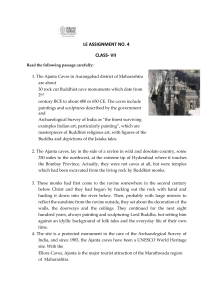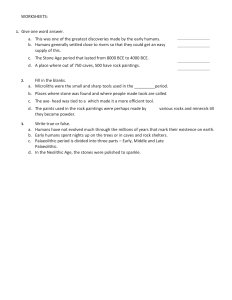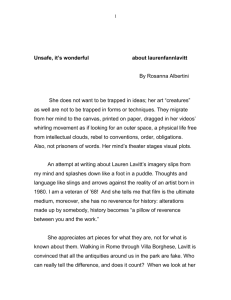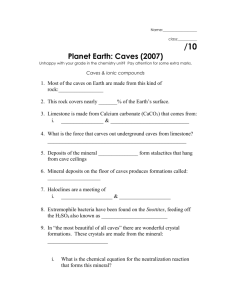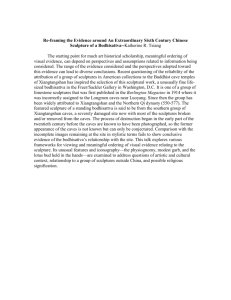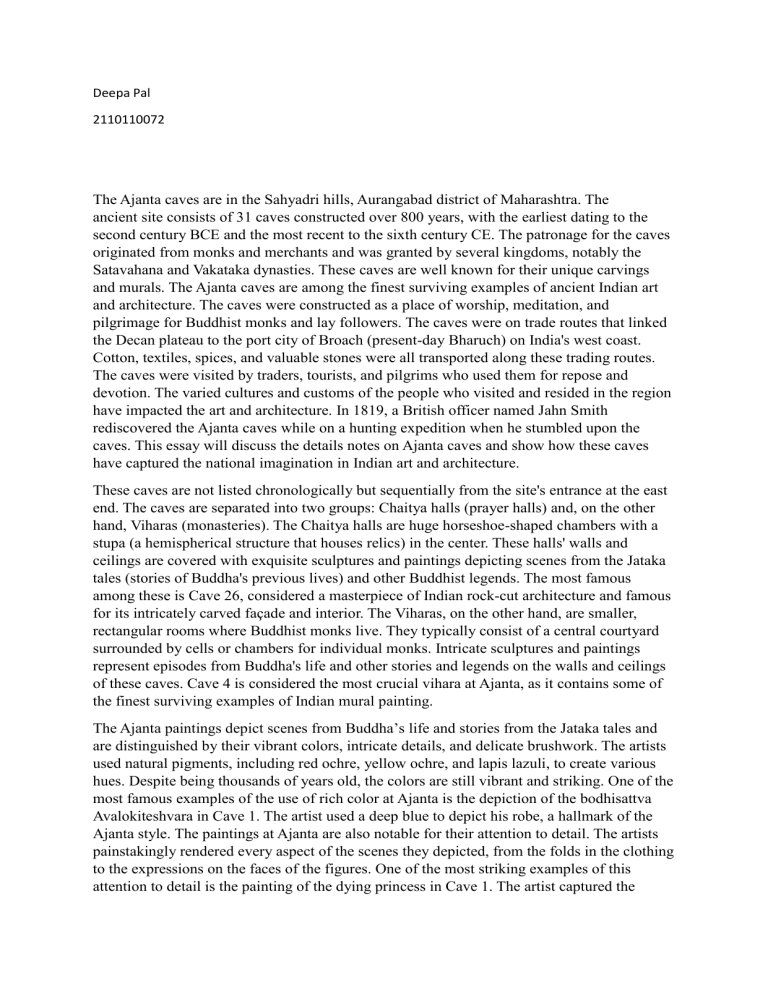
Deepa Pal 2110110072 The Ajanta caves are in the Sahyadri hills, Aurangabad district of Maharashtra. The ancient site consists of 31 caves constructed over 800 years, with the earliest dating to the second century BCE and the most recent to the sixth century CE. The patronage for the caves originated from monks and merchants and was granted by several kingdoms, notably the Satavahana and Vakataka dynasties. These caves are well known for their unique carvings and murals. The Ajanta caves are among the finest surviving examples of ancient Indian art and architecture. The caves were constructed as a place of worship, meditation, and pilgrimage for Buddhist monks and lay followers. The caves were on trade routes that linked the Decan plateau to the port city of Broach (present-day Bharuch) on India's west coast. Cotton, textiles, spices, and valuable stones were all transported along these trading routes. The caves were visited by traders, tourists, and pilgrims who used them for repose and devotion. The varied cultures and customs of the people who visited and resided in the region have impacted the art and architecture. In 1819, a British officer named Jahn Smith rediscovered the Ajanta caves while on a hunting expedition when he stumbled upon the caves. This essay will discuss the details notes on Ajanta caves and show how these caves have captured the national imagination in Indian art and architecture. These caves are not listed chronologically but sequentially from the site's entrance at the east end. The caves are separated into two groups: Chaitya halls (prayer halls) and, on the other hand, Viharas (monasteries). The Chaitya halls are huge horseshoe-shaped chambers with a stupa (a hemispherical structure that houses relics) in the center. These halls' walls and ceilings are covered with exquisite sculptures and paintings depicting scenes from the Jataka tales (stories of Buddha's previous lives) and other Buddhist legends. The most famous among these is Cave 26, considered a masterpiece of Indian rock-cut architecture and famous for its intricately carved façade and interior. The Viharas, on the other hand, are smaller, rectangular rooms where Buddhist monks live. They typically consist of a central courtyard surrounded by cells or chambers for individual monks. Intricate sculptures and paintings represent episodes from Buddha's life and other stories and legends on the walls and ceilings of these caves. Cave 4 is considered the most crucial vihara at Ajanta, as it contains some of the finest surviving examples of Indian mural painting. The Ajanta paintings depict scenes from Buddha’s life and stories from the Jataka tales and are distinguished by their vibrant colors, intricate details, and delicate brushwork. The artists used natural pigments, including red ochre, yellow ochre, and lapis lazuli, to create various hues. Despite being thousands of years old, the colors are still vibrant and striking. One of the most famous examples of the use of rich color at Ajanta is the depiction of the bodhisattva Avalokiteshvara in Cave 1. The artist used a deep blue to depict his robe, a hallmark of the Ajanta style. The paintings at Ajanta are also notable for their attention to detail. The artists painstakingly rendered every aspect of the scenes they depicted, from the folds in the clothing to the expressions on the faces of the figures. One of the most striking examples of this attention to detail is the painting of the dying princess in Cave 1. The artist captured the princess's agony and despair in exquisite detail, from the tears running down her face to the intricate patterns on her clothing. The paintings at Ajanta are significant for their narrative quality. They tell stories through their images, conveying various emotions and ideas. One of the most famous examples of this narrative quality is the Jataka tale of Prince Sudhana in Cave 17. The paintings tell the story of a prince who journeys to enlightenment, encountering various obstacles and challenges. The artists conveyed the story's complexity and depth through intricate and detailed paintings. The sculptures in the Ajanta Caves are also noteworthy for their high level of detail and intricate carving. They are carved from the surrounding rock and depict various deities, Bodhisattvas, and other figures from Buddhist mythology. Some of the most famous sculptures in the caves include the Buddha in the Mahaparinirvana pose, the Bodhisattva Avalokiteshvara, and the Buddha preaching his first sermon. One of the most striking features of the Ajanta frescoes is how they depict the human body in various postures and expressions. Whether it is a standing figure, a seated one, or one in motion, the artists at Ajanta captured the essence of each pose with remarkable precision and grace. For example, the figure of the Buddha in Ajanta Cave 1 is shown in a serene and meditative posture, with a gentle smile on his face that conveys a sense of peace and tranquility. Similarly, the frescoes at Ajanta depict a wide range of emotions and expressions, from joy and contentment to sorrow and pain. The artists were masters at portraying the nuances of human emotion and used subtle changes in facial expression, body language, and gestures to convey various feelings and moods. For instance, the frescoes at Cave 17 show women engaged in multiple activities, such as playing musical instruments, dancing, and carrying water pots. Each figure is depicted with a unique expression and posture that captures the moment’s mood. The paintings in the Ajanta caves also depict a range of plants and animals, including elephants, deer, monkeys, peacocks, and snakes, among others. These depictions are aesthetically pleasing and provide insights into the region’s natural environment when the caves were constructed. One of the most prominent examples of flora depicted in the caves is the lotus flower, a symbol of purity in Buddhism. The lotus is expressed in various stages of growth, from the bud to the fully bloomed flower, and is often shown as a backdrop to Buddha statues or as a decorative element in murals. Similarly, the caves also depict various types of trees, such as the Bodhi tree, a sacred fig tree under which the Buddha attained enlightenment, and the Sala tree, used to build the Buddha's hut. The paintings also show medicinal plants and herbs, highlighting the importance of nature in healing and medicine. The Ajanta caves' artwork also showcases various domestic and wild animals. Elephants were an essential part of Indian society and were used for transportation, war, and religious ceremonies. The paintings depict elephants with their mahouts or handlers and in processions and battles. Other animals depicted include deer, lions, tigers, monkeys, and birds such as peacocks. Institutional spaces such as museums and art galleries have played an essential role in preserving and showcasing these paintings. In India, the Ajanta caves are a UNESCO World Heritage site managed by the Archaeological Survey of India. ASI took over the care and conservation of the paintings in the post-Independence period, and considerable effort has been made to remove the damaging layers of shellac as far as can be managed safely without harming the original pigments below. The Archaeological Department of the Government of the Nizam of Hyderabad launched a significant restoration and photographic initiative. The Nizam engaged the Italian restorers Cecconi and Orsini to work at Ajanta for two seasons in 1920-21 and 1921-22. The site is open to the public; visitors can view the paintings. In addition to the Ajanta caves, paintings from Ajanta have been replicated and displayed in various institutional spaces worldwide. For example, the National Museum in New Delhi has a collection of Ajanta paintings, as does the Prince of Wales Museum in Mumbai. These museums have created dedicated spaces for displaying these paintings, often with explanatory text and multimedia installations to provide context and background information for visitors. Outside of India, the British Museum in London has a collection of Ajanta paintings, which were acquired by the museum in the 19th century. These paintings are displayed in the museum's Asia Gallery alongside other important regional artifacts. The paintings at Ajanta are significant for their influence on art history. They are considered a milestone in the development of Indian painting, and they continue to inspire artists today. The paintings at Ajanta have been studied and appreciated by scholars and art lovers for centuries, and they continue to captivate and enchant visitors today.
